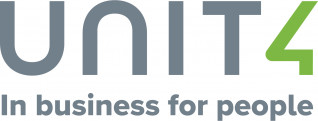There is no question that the Covid-19 pandemic is creating hardships for local governments as recreation, illegal parking and transportation revenues decline and more money gets directed into public health initiatives. Budget cuts, where not already underway, are looming and municipal governments will need to find operational efficiencies and direct scarce resources to where they are most needed and have the greatest impact. In this post, we look at how 311 or citizen service request data can be an extremely valuable component in the toolkit of a local government trying to maintain services with fewer resources at its disposal.
It comes as no surprise that, as part of the open data movement, larger cities have been at the forefront of investing in data hubs that consolidate data from 311 service requests and multiple other sources. New York City, for example, has been relying on sophisticated data analytics for several years to measure performance and better inform the allocation of the city’s financial resources, equipment and personnel. Like many large North American cities, New York maintains a portal where the public has access to critical performance measures from multiple agencies. The benefits of this treasure trove of data for city managers are obvious, however, the very significant investments in time and cost required to get there are out of reach for smaller municipalities.
But concerns about cost or complexity should not prevent these smaller municipalities from pursuing a data-driven approach to finding efficiencies in their operations. The trick is to have a clear idea of the keys to success and the right set of tools to get there. For example:
Data Focus
When considering a goal of optimizing resource allocation in the face of budget constraints, the value across various types of data is not necessarily equivalent and therefore prioritization is needed. 311 service request data is particularly powerful because properly implemented, there should be a documented record of every touchpoint with the concerned citizen and assigned staff from the time an issue is raised to when it is resolved and closed. From a management perspective, this is extremely valuable.
The Right CRM
Regardless of municipality size, aggregation of the required data is unlikely to be successful without leveraging a CRM to manage service requests. CRM implementations should not, by default, be cost-prohibitive and there are cloud-based solutions available today that are easy to adapt and built specifically with the needs of smaller municipalities in mind.
Seamless Data Collection
The aggregation of comprehensive service request data that can be used reliably to inform operational decisions needs to happen by default. Local government service delivery will likely continue without staff increases for the foreseeable future, meaning that technology used needs to make the work of municipal staff easier in general and at the same time avoid any extra effort to collect and store the desired performance-related data. And since the primary data sources are the citizens themselves, an omnichannel approach that makes it simple to report service issues is critical. Citizens that are engaged in the way that best suits them will be far more likely to participate in making their communities better.
Flexible Analytics and Reporting
Once the data is available in one place, making sense of it is the next challenge. For smaller municipalities, the tools needed to visualize and report on service request data will, ideally, be baked into the solution used to manage day-to-day requests. Regardless of the technology that is applied, however, there are several imperatives that should be in place to fully benefit from this type of data analysis initiative. In all likelihood, various stakeholders including the city council, CAOs, and departmental managers will have different objectives when looking at the data, and these objectives will evolve over time. This speaks to the need for simplicity and flexibility for configuring and saving reports and dashboards on an individual basis. Access to configurable GIS views of the data can be highly useful as well in identifying trouble spots, prioritizing work plans, and scheduling the activities of field staff.
The bottom line is that there are opportunities for governments of any size to invest in a data-informed and results-oriented approach to finding savings in their operations. And although the pandemic will hopefully be in the rear-view mirror soon, it is not too late for municipal governments to start unlocking the power of service request data. This is a natural evolution for those with a suitable CRM already in place, but even where not the case adoption of suitable technology does not need to be onerous. Doing so will help with the immediate need to recover quickly from pandemic-induced shortfalls, and will continue to pay dividends for many years to come.








